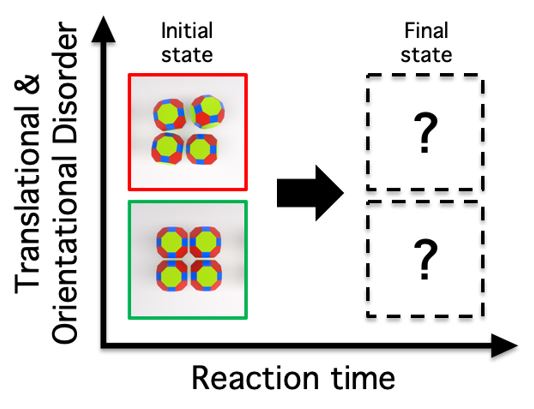2020 Virtual AIChE Annual Meeting
(673k) The Role of Dimer Formation in the Nucleation of Superlattice Transformations and Its Impact on Disorder
Authors
Isaiah Y. Chen - Presenter, Johns Hopkins University
Jessica Akemi Cimada da Silva, Cornell University
Tobias Hanrath, Cornell University
Paulette Clancy, The Johns Hopkins University
Daniel Balazs, Cornell University
Michelle A. Smeaton, Cornell University
The formation of defect-free two-dimensional nanocrystal (NC) superstructures remains a challenge; experimentally produced 2D materials contain defects that hinder their performance. The specific reasons as to why this is are difficult to determine, as superlattice phase transformations that occur during synthesis are quite complex and there are a variety of different factors that can influence the disorder in the final structure. Here, we use Molecular Dynamics (MD) and electron microscopy in concert to investigate the nucleation of the epitaxial attachment of lead chalcogenide (PbX, where X = S, Se) NC assemblies at the atomic level. We use an updated implementation of an existing reactive force field in a MD framework to investigate how initial in-plane and out-of-plane (mis)alignment of the constituent building blocks impacts the final structure of the epitaxially connected superlattice. We use a reactive force field, the Simple Molecular Reactive Force Field (SMRFF), which captures both short-range covalent forces and long-range electrostatic forces. These reactive MD simulations allow us to follow orientational and translational changes of NC arrays during superlattice transformation. Our simulations show the extent of robustness of the superlattice transformation with regards to the initial position of the NCs, measuring its sensitivity to both in-plane and out-of-plane misorientation; oriented attachment nucleates through the initial formation of dimers and trimers, which we corroborate with experimentally observed structures. We present a high-resolution structural analysis of dimers at early stages of the superlattice transformation and rationalize their contribution to the formation of defects in the final superlattice. Collectively, the simulations and experiments presented in this paper provide a new understanding of the nucleation and oriented attachment of NCs, the impact of the initial configuration of NCs on the final epitaxially connected superlattice, and the propensity to form commonly observed defects, such as missing bridges and atomic misalignment in the superlattice due to the formation of dimers. We also present potential strategies to mitigate the formation of superlattice defects.


